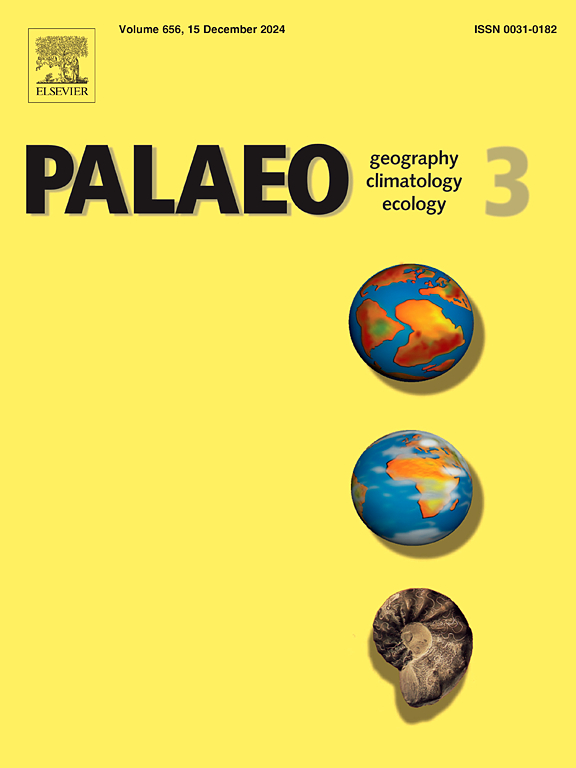Holocene erosion processes dominated by the East Asian Summer Monsoon: Evidence from the radiocarbon age offset of lacustrine sediments in Gonghai Lake, Chinese Loess Plateau
IF 2.6
2区 地球科学
Q2 GEOGRAPHY, PHYSICAL
Palaeogeography, Palaeoclimatology, Palaeoecology
Pub Date : 2025-01-30
DOI:10.1016/j.palaeo.2025.112768
引用次数: 0
Abstract
Soil and water loss due to erosion in the Chinese Loess Plateau (CLP) has been a persistent ecological issue of significant concern to both the government and society. However, the limited timespan of existing measurements has resulted in a poor understanding of the long-term processes and mechanisms underlying erosion in the region. Changes in the 14C reservoir age in enclosed lacustrine sediments are linked to the input of old carbon into lakes due to erosion. These changes can, to some extent, reflect the intensity of erosion within the surrounding catchment. In this study, we analyzed a sediment core GH09B from the central part of Gonghai Lake, a hydrologically closed alpine lake located on the northeastern margin of the CLP. The core provides a high-precision chronological framework spanning approximately the last 14.7 ka, based on 25 AMS 14C dates of terrestrial plant remains. To complement this, we obtained 24 AMS 14C dates of bulk samples within the same core (GH09B). By comparing the 14C ages of the bulk samples with those of terrestrial plant remains at corresponding depths, we reconstructed changes in the 14C reservoir age of Gonghai Lake on a millennial timescale during the Holocene. The results reveal that the 14C reservoir age was more pronounced during the early and late Holocene, while it was comparatively smaller during the middle Holocene. Drawing on high-resolution paleoclimate data from Gonghai Lake, we propose that during the middle Holocene, a relatively stronger East Asian Summer Monsoon (EASM) fostered greater vegetation coverage, which enhanced soil and water conservation, mitigated erosion, and, a result, reduced the carbon reservoir effect. In contrast, the weaker EASM during the early and late Holocene, coupled with lower vegetation coverage, led to increased erosion intensity and stronger carbon reservoir effect. Changes in vegetation coverage, primarily driven by fluctuations in the EASM, were the primary factor influencing catchment erosion intensity in the CLP during the Holocene.
求助全文
约1分钟内获得全文
求助全文
来源期刊
CiteScore
5.90
自引率
10.00%
发文量
398
审稿时长
3.8 months
期刊介绍:
Palaeogeography, Palaeoclimatology, Palaeoecology is an international medium for the publication of high quality and multidisciplinary, original studies and comprehensive reviews in the field of palaeo-environmental geology. The journal aims at bringing together data with global implications from research in the many different disciplines involved in palaeo-environmental investigations.
By cutting across the boundaries of established sciences, it provides an interdisciplinary forum where issues of general interest can be discussed.

 求助内容:
求助内容: 应助结果提醒方式:
应助结果提醒方式:


